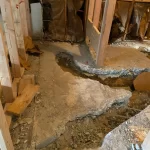In the realm of affordable housing development in the United States, the Low Income Housing Tax Credit (LIHTC) program, particularly the 4 percent LIHTC fixed-rate credit, has emerged as a crucial lifeline for developers navigating the complexities of financing. Enacted under the Consolidated Appropriations Act 2021, this fixed rate has reshaped the landscape of affordable housing finance, offering stability and predictability amidst fluctuating economic conditions.
Overview Of The 4 Percent Fixed Rate LIHTC
Historically, LIHTC rates fluctuated in response to the Applicable Federal Rate (AFR). However, the establishment of a minimum 4 percent tax credit rate has provided LIHTC developers and investors with a reliable source of equity, approximately equivalent to 30 percent for qualifying projects. This stability has been pivotal in supporting the construction and rehabilitation of affordable housing units across the nation by LIHTC builders.
Strategic Project Applications
The 4 percent LIHTC is instrumental in financing two main types of projects:
- New Construction or Rehabilitation: Paired with Private Activity Bonds (PABs), the 4 percent tax credit facilitates the development of new housing projects and the refurbishment of existing properties. This dual functionality addresses critical needs in expanding housing stock and revitalizing aging infrastructure by LIHTC Builders.
- Acquisition and Rehabilitation: In conjunction with the competitive 9 percent LIHTC award, the 4 percent tax credit can be leveraged to cover acquisition costs for existing buildings undergoing renovation. This strategic use optimizes financial structures while harnessing tax incentives to support community redevelopment efforts.
Maximizing Benefits With Private Activity Bonds (PABs)
Private Activity Bonds play a pivotal role in enhancing the feasibility of LIHTC projects by providing developers with a 4 percent annual tax credit on all eligible project costs when utilizing PAB financing. Moreover, projects located in Difficult to Develop Areas (DDAs) or Qualified Census Tracts (QCTs) qualify for an additional 30 percent boost on an eligible basis, significantly expanding the scope and impact of affordable housing initiatives.
Streamlined Approval Process
The 4 percent LIHTC, when combined with PABs, operates under a non-competitive “as of right” framework. This streamlined approach ensures that eligible projects receive tax credits without competing against other applicants. While acquisition costs of existing buildings do not qualify for the 130 percent basis boost in QCTs or DDAs, this simplified process accelerates project approval and implementation timelines.
Synergistic Approach With Competitive 9 Percent Awards
Projects awarded the competitive 9 percent LIHTC can strategically integrate the 4 percent LIHTC to finance acquisition costs for existing buildings. This synergistic approach maximizes financial incentives while maintaining eligibility for both credits, thereby optimizing capital deployment and project feasibility.
Adhering To Bond Usage Requirements
To qualify for the 4 percent tax credits, developers and LIHTC builders must ensure that PABs cover at least 50 percent of total development costs and are utilized during the construction phase. This adherence not only aligns with program guidelines but also ensures that bond financing directly supports project execution and completion.
Conclusion
The 4 percent Low Income Housing Tax Credit, coupled with Private Activity Bonds, represents a pivotal tool for developers and investors committed to expanding affordable housing options. By offering stable equity and versatile project utilization, the 4 percent LIHTC fosters innovative solutions to address housing shortages and promote community revitalization efforts nationwide. Understanding these dynamics is essential for stakeholders navigating the intricate landscape of affordable housing development amid evolving economic challenges. For more information, contact us today!










